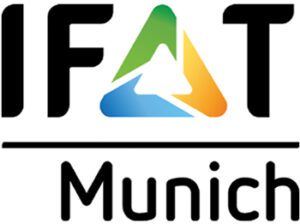 IFAT 2022, the world’s leading trade fair for water, sewage, waste and raw materials management takes place from May 30 to June 3 at the Munich fairgrounds (www.ifat.de). More than 3,300 exhibitors from 58 countries will be displaying their equipment in 18 exhibition halls covering 260,000 m2 of exhibition space. In addition to the exhibition, there are a number of special supporting programs, including: The Future of Water — Access and Quality; Circular Economy and Resource Efficiency; Sustainable Cities and Municipalities; Intelligent Drives and Zero Emissions; and Mineral Waste Cycle and Sustainable Road Construction. There is also a special area for start-ups, which spotlights innovators, future collaborations, profitable-production processes and specific technology solutions.
IFAT 2022, the world’s leading trade fair for water, sewage, waste and raw materials management takes place from May 30 to June 3 at the Munich fairgrounds (www.ifat.de). More than 3,300 exhibitors from 58 countries will be displaying their equipment in 18 exhibition halls covering 260,000 m2 of exhibition space. In addition to the exhibition, there are a number of special supporting programs, including: The Future of Water — Access and Quality; Circular Economy and Resource Efficiency; Sustainable Cities and Municipalities; Intelligent Drives and Zero Emissions; and Mineral Waste Cycle and Sustainable Road Construction. There is also a special area for start-ups, which spotlights innovators, future collaborations, profitable-production processes and specific technology solutions.
The following is a sample of some of the products being exhibited at IFAT 2022.